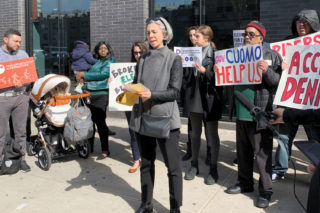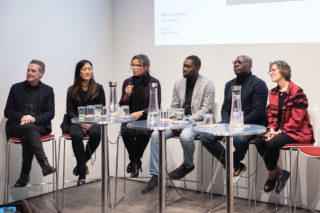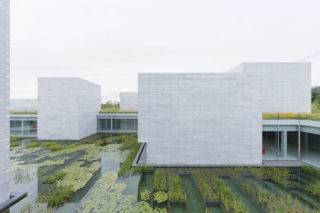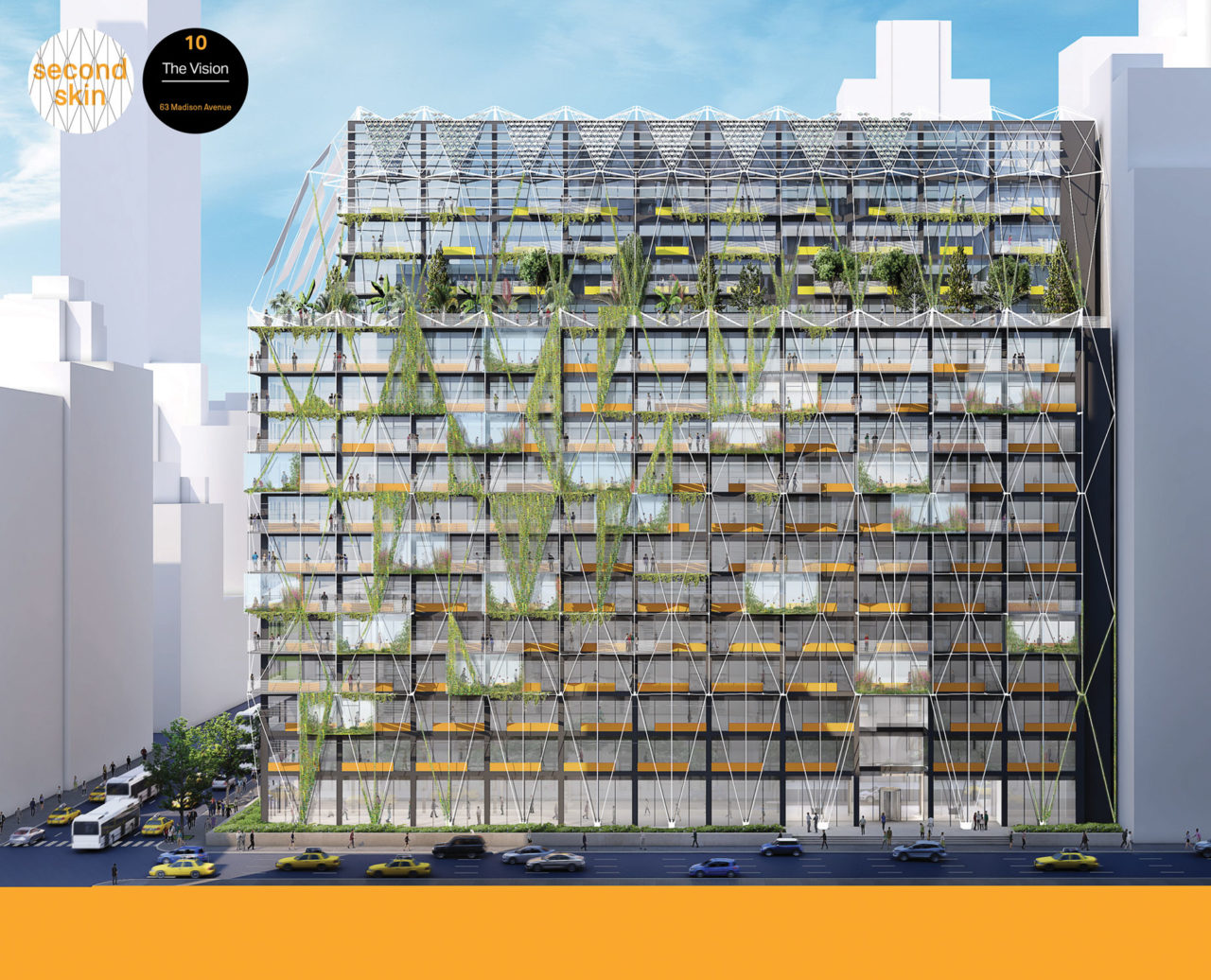
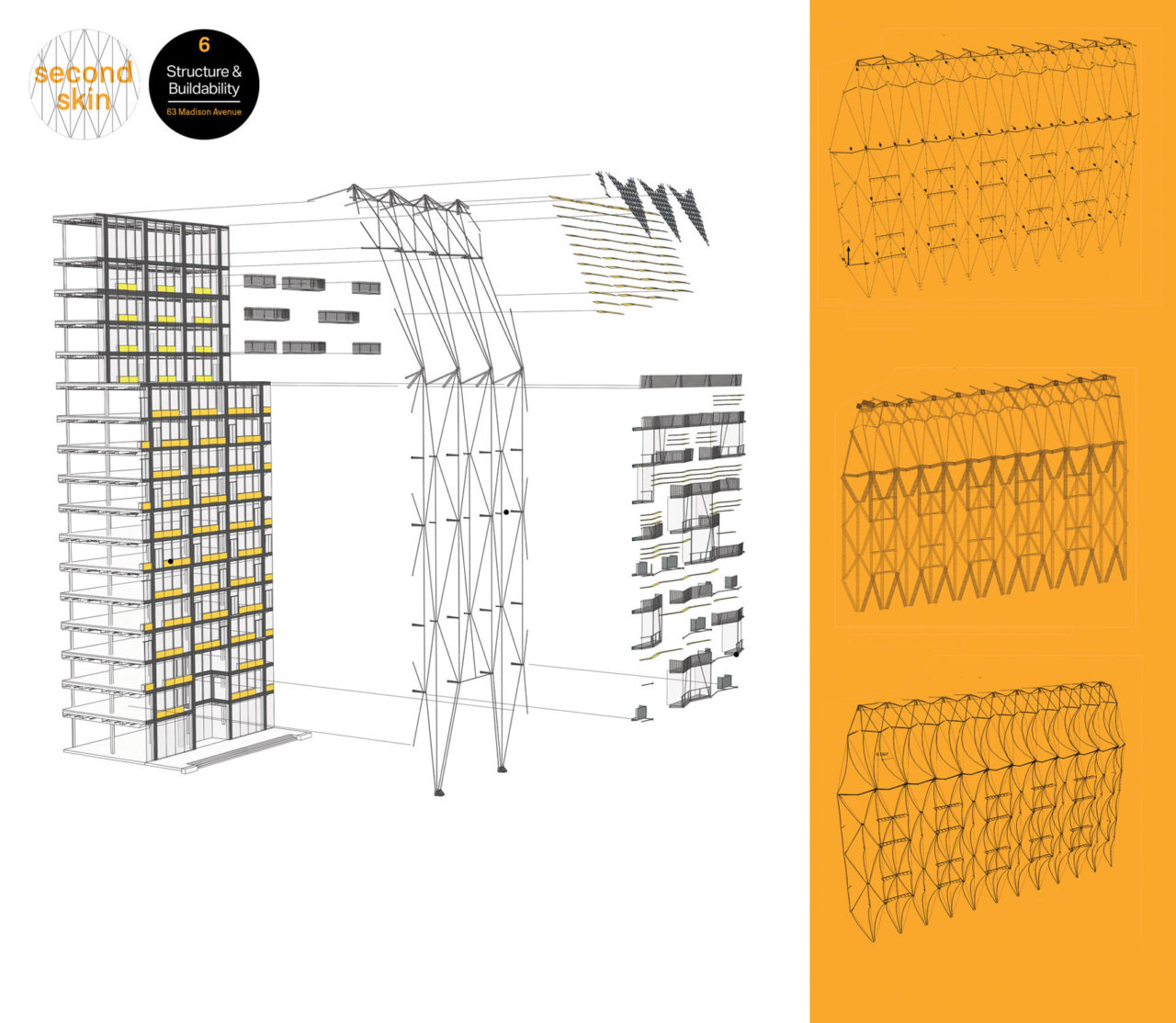
Metals in Construction magazine and the Ornamental Metal Institute of New York recently named a winner and five finalists for the 2020 Design Challenge to give an aging office tower a new identity. The competition, titled “Transform a Facade,” challenged architects, engineers, and students to submit ideas for upgrading an aging, energy-inefficient high-rise office building in order to comply with NYC’s Green New Deal goals, and also to create a more desirable space for companies competing for the highly skilled employees in today’s labor market. The site chosen for the challenge was 63 Madison Avenue, a 15-story high-rise office building constructed in 1962. Its age makes it typical of the office buildings that populate Manhattan’s NoMad district, many of which are mandated to reduce carbon emissions by 2030 to comply with the city’s new building emissions standards, known as the Climate Mobilization Act (CMA). The CMA’s emissions targets are stringent: to comply, 63 Madison must cut its emissions in half by 2030.
The magazine awarded a $15,000 grand prize to the design judged best at achieving the goals of increasing light to the interior and affording tenants greater visual access to the outdoors while significantly reducing carbon emissions. Titled “Second Skin,” the winning proposal was submitted by a team with members from WilkinsonEyre, Eckersley O’Callaghan, Josef Gartner GmbH, MRG Studio, and Level Infrastructure.
“We were drawn to this exciting competition initially due to its sustainable credentials,” says Giles Martin, project director, WilkinsonEyre. “Rather than imagining a shiny new façade system, it genuinely seeks to solve a very real problem; many of New York’s buildings won’t meet the 2030 targets, but how to retrofit a solution without redeveloping the whole building? With our partners Eckersley O’Callaghan and Gartner we have developed ‘Second Skin,’ a loose-fit system that can be applied to any number of the city’s existing buildings, giving them a new image and new function for today’s market. After all, the greenest building is one that exists already.”
This year’s winner was chosen from a field of 31 qualifying entries. The panel of six jurors who awarded the prize include experts in office architecture and façade design and engineering: Gabrielle Brainard, AIA, LEED AP, CHPC, architect, building envelope consultant, educator; Margaret Cavenagh, AIA, LEED AP, Studio Gang; Enrica Oliva, M.Sc. Struct. Eng., Werner Sobek New York; John Pachuta, AIA, Heintges; Mic Patterson, PhD, LEED AP+, Façade Tectonics Institute; and Stephen Selkowitz, Lawrence Berkeley National Laboratory.
See the winner’s and finalists’ competition entries at metalsinconstruction.org/2020-winners-finalists.








